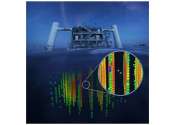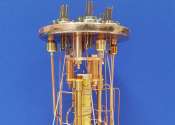A neutrino (English pronunciation: /njuːˈtriːnoʊ/, Italian pronunciation: [neuˈtriːno]) is an electrically neutral, weakly interacting elementary subatomic particle with a half-integer spin, chirality and a disputed but small non-zero mass. It is able to pass through ordinary matter almost unaffected. The neutrino (meaning "small neutral one" in Italian) is denoted by the Greek letter ν (nu).
Neutrinos do not carry electric charge, which means that they are not affected by the electromagnetic forces that act on charged particles such as electrons and protons. Neutrinos are affected only by the weak sub-atomic force, of much shorter range than electromagnetism, and gravity, which is relatively weak on the subatomic scale, and are therefore able to travel great distances through matter without being affected by it.
Neutrinos are created as a result of certain types of radioactive decay, or nuclear reactions such as those that take place in the Sun, in nuclear reactors, or when cosmic rays hit atoms. There are three types, or "flavors", of neutrinos: electron neutrinos, muon neutrinos and tau neutrinos. Each type also has a corresponding antiparticle, called an antineutrino with an opposite chirality.
Most neutrinos passing through the Earth emanate from the Sun. About 65 billion (6.5×1010) solar neutrinos per second pass through every square centimeter perpendicular to the direction of the Sun in the region of the Earth.
In September 2011, neutrinos apparently moving faster than light were detected (see OPERA neutrino anomaly). Since then the experiment has undergone extensive critique and efforts to replicate the results because confirming the results would change our understanding of the theory of relativity. (See Speed below)









